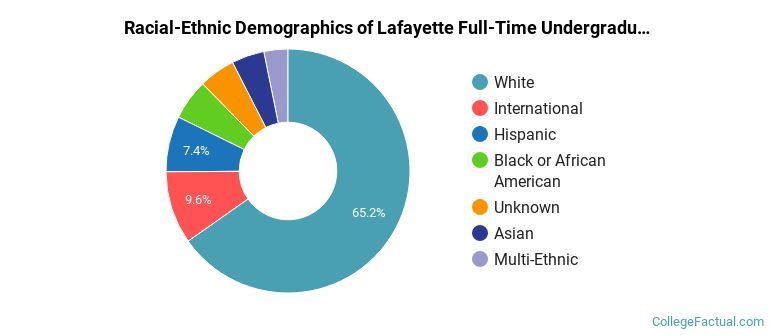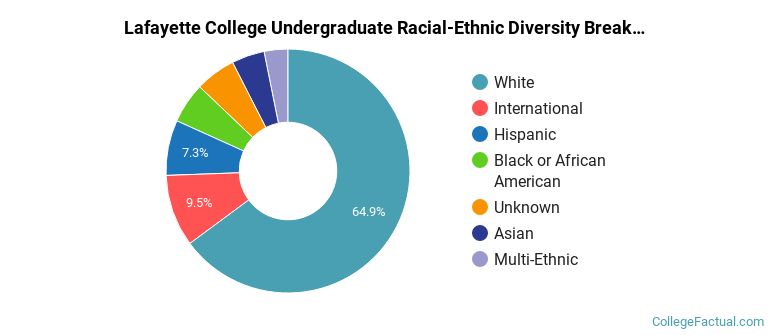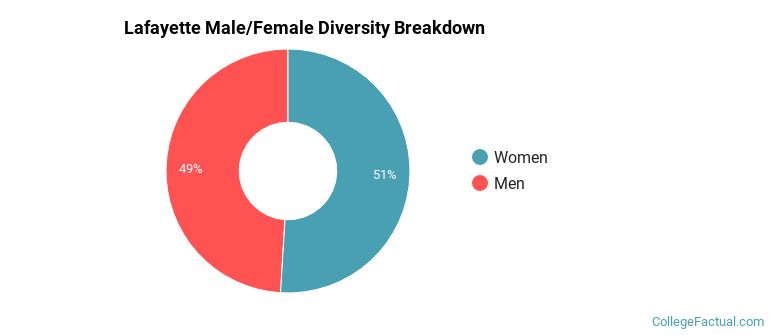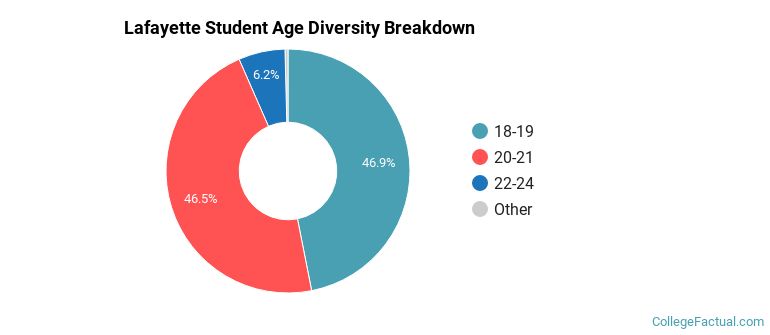 by our College Data Analytics Team
by our College Data Analytics TeamLafayette total enrollment is approximately 2,514 students.
Male/Female Breakdown of Undergraduates
The full-time Lafayette undergraduate population is made up of 51% women, and 49% men.

For the gender breakdown for all students, go here.
Lafayette Racial/Ethnic Breakdown of Undergraduates

| Race/Ethnicity | Number |
|---|---|
| White | 1,634 |
| International | 224 |
| Hispanic | 187 |
| Black or African American | 123 |
| Asian | 107 |
| Multi-Ethnic | 92 |
| Unknown | 90 |
| Native Hawaiian or Pacific Islander | 0 |
See racial/ethnic breakdown for all students.

| Race/Ethnicity | Number |
|---|---|
| White | 1,668 |
| International | 224 |
| Hispanic | 187 |
| Black or African American | 124 |
| Asian | 111 |
| Unknown | 107 |
| Multi-Ethnic | 93 |
| Native Hawaiian or Pacific Islander | 0 |

There are approximately 1,285 female students and 1,229 male students at Lafayette.
Lafayette ranks 145 out of 2,183 when it comes to geographic diversity.
81.93% of Lafayette students come from out of state, and 10.32% come from out of the country.

The undergraduate student body is split among 35 states (may include Washington D.C.). Click on the map for more detail.

| State | Amount |
|---|---|
| New Jersey | 120 |
| New York | 109 |
| Pennsylvania | 105 |
| Massachusetts | 47 |
| Connecticut | 40 |
Students from 60 countries are represented at this school, with the majority of the international students coming from China, Vietnam, and India.
Learn more about international students at Lafayette.
A traditional college student is defined as being between the ages of 18-21. At Lafayette, 91.56% of students fall into that category, compared to the national average of 60%.

| Student Age Group | Amount |
|---|---|
| 18-19 | 1,192 |
| 20-21 | 1,183 |
| 22-24 | 157 |
| 25-29 | 5 |
| 35 and over | 3 |
| 30-34 | 2 |
| Under 18 | 0 |
Footnotes
*The racial-ethnic minorities count is calculated by taking the total number of students and subtracting white students, international students, and students whose race/ethnicity was unknown. This number is then divided by the total number of students at the school to obtain the racial-ethnic minorities percentage.
References